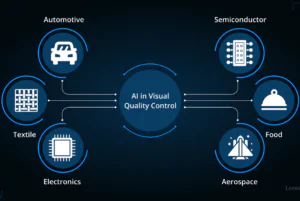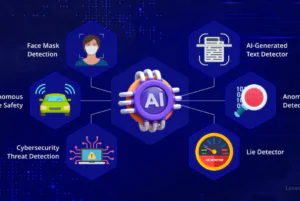Overview
Shadow AI refers to the unregulated and often unnoticed use of artificial intelligence technologies within organizations. This phenomenon encompasses AI applications developed or utilized without formal approval, oversight, or integration into the company’s official IT infrastructure. Shadow AI can drive significant innovation and efficiency gains, but it also presents substantial risks, including data security breaches, ethical concerns, and operational disruptions. Understanding Shadow AI is crucial for organizations aiming to harness the benefits of AI while mitigating potential hazards.
Introduction
Artificial intelligence (AI) has become a cornerstone of modern technology, permeating various sectors from healthcare and finance to transportation and entertainment. While the benefits of AI are well-documented, the rise of Shadow AI—AI systems and applications implemented without formal governance or oversight—presents a dual-edged sword. On the one hand, Shadow AI can drive rapid innovation, improve efficiency, and offer competitive advantages. On the other hand, it poses significant risks related to data privacy, security, compliance, and ethical standards.
Shadow AI often emerges from the need to quickly address specific business challenges or capitalize on new opportunities without waiting for the slower, more cumbersome processes of official approval and integration. Employees and departments, driven by immediate needs or ambitions, might develop or adopt AI tools independently, bypassing established protocols and IT departments. This covert deployment creates a landscape where AI systems operate without the necessary safeguards, potentially leading to unintended consequences.

Key Features
1. Unregulated Deployment
Shadow AI is characterized by its deployment outside the purview of official IT governance. This unregulated implementation can occur through various means, including unauthorized software and tools, personal devices, and external cloud services. The lack of oversight can result in a fragmented and insecure IT environment, where data flows in and out of systems without proper monitoring or control.
2. Rapid Innovation
One of the primary drivers of Shadow AI is the desire for rapid innovation. Employees seeking to improve processes or solve problems quickly may turn to AI tools that can be deployed immediately, without the delays associated with formal approval and integration. This agility allows for faster experimentation and iteration, potentially leading to breakthrough solutions that might not have been possible within the constraints of traditional IT governance.
3. Efficiency Gains
Shadow AI can lead to significant efficiency gains by automating routine tasks, analyzing large datasets, and providing insights that drive better decision-making. For example, marketing teams might use unauthorized AI tools to analyze customer data and generate targeted campaigns, or finance departments might deploy AI for fraud detection and risk assessment. These applications can enhance productivity and effectiveness across various functions.
4. Data Security Risks
The unregulated nature of Shadow AI poses substantial data security risks. Without proper oversight, AI applications may access, process, and store sensitive data in insecure ways, leading to potential breaches and data loss. Unauthorized AI tools might not adhere to the organization’s security policies, making them vulnerable to cyberattacks and exposing the organization to significant liability.
5. Ethical and Compliance Concerns
Shadow AI can lead to ethical and compliance issues, particularly in industries with stringent regulations. AI systems deployed without proper oversight may not adhere to legal requirements, such as data privacy laws and industry standards. This lack of compliance can result in legal penalties, reputational damage, and loss of trust among customers and stakeholders.
6. Operational Disruptions
The use of Shadow AI can disrupt organizational operations by creating conflicts between officially sanctioned systems and unauthorized applications. Inconsistent data, incompatible technologies, and lack of coordination can lead to inefficiencies, errors, and operational silos. These disruptions can undermine the benefits of AI and hinder the organization’s overall performance.

Body
The Drivers of Shadow AI
- Need for Speed and Agility
In today’s fast-paced business environment, the pressure to innovate and stay competitive is immense. Traditional IT governance processes, while essential for ensuring security and compliance, can be slow and cumbersome. This creates a gap that Shadow AI fills by allowing employees to quickly deploy AI solutions that address immediate needs and opportunities.
- Accessibility of AI Tools
The increasing accessibility of AI tools and platforms contributes to the rise of Shadow AI. Many AI applications are available as easy-to-use software-as-a-service (SaaS) solutions that require little to no technical expertise to deploy. This democratization of AI technology enables non-technical employees to leverage AI for their specific needs, often without involving the IT department.
The Risks and Challenges of Shadow AI
- Data Privacy and Security
The primary concern with Shadow AI is data privacy and security. Unauthorized AI applications may lack robust security measures, leading to potential data breaches and unauthorized access to sensitive information. This not only exposes the organization to financial and legal risks but also undermines customer trust and confidence.
- Compliance and Regulatory Issues
Industries such as healthcare, finance, and manufacturing are subject to strict regulations regarding data use and privacy. Shadow AI applications that operate outside of official governance frameworks may fail to comply with these regulations, resulting in legal penalties and reputational damage. Ensuring compliance requires visibility and control over all AI deployments within the organization.
- Ethical Considerations
The ethical implications of AI are significant, particularly in areas such as bias, fairness, and transparency. Shadow AI applications may not be subject to the same ethical standards and scrutiny as officially sanctioned systems, leading to biased or unfair outcomes. Addressing these ethical concerns requires a comprehensive approach to AI governance and oversight.
- Operational Inefficiencies
The coexistence of Shadow AI and official IT systems can create operational inefficiencies. Incompatible technologies, fragmented data, and lack of coordination can lead to errors, redundancies, and conflicts. These inefficiencies can undermine the potential benefits of AI and hinder the organization’s overall performance.
Mitigating the Risks of Shadow AI
- Implementing Robust AI Governance
To address the challenges posed by Shadow AI, organizations must implement robust AI governance frameworks. This involves establishing clear policies and procedures for AI deployment, monitoring, and oversight. AI governance should ensure that all AI applications adhere to security, compliance, and ethical standards, regardless of how they are developed or deployed.
- Enhancing Visibility and Control
Organizations need to enhance their visibility and control over AI deployments by implementing monitoring and auditing mechanisms. This includes tracking the use of AI tools, assessing their impact, and ensuring they comply with organizational policies. Enhanced visibility allows organizations to identify and address Shadow AI applications before they pose significant risks.
- Educating Employees
Educating employees about the risks and challenges of Shadow AI is crucial. Training programs should emphasize the importance of adhering to official IT policies and the potential consequences of unauthorized AI deployments. By fostering a culture of awareness and responsibility, organizations can reduce the prevalence of Shadow AI.
- Encouraging Collaboration
Encouraging collaboration between IT departments and business units can help bridge the gap between innovation and governance. By involving IT in the early stages of AI projects, organizations can ensure that AI applications are developed and deployed within the framework of official policies and standards. This collaboration can drive innovation while maintaining security and compliance.

Conclusion
Shadow AI represents a complex and multifaceted challenge for modern organizations. While it offers the potential for rapid innovation and efficiency gains, it also poses significant risks related to data security, compliance, ethics, and operational efficiency. Addressing these challenges requires a comprehensive approach to AI governance, enhanced visibility and control, employee education, and fostering collaboration between IT and business units. By proactively managing Shadow AI, organizations can harness the benefits of AI while mitigating its risks, ensuring that their technological advancements contribute to sustainable and ethical growth.



YCovnuhjNdei
I loved as much as youll receive carried out right here The sketch is tasteful your authored material stylish nonetheless you command get bought an nervousness over that you wish be delivering the following unwell unquestionably come more formerly again since exactly the same nearly a lot often inside case you shield this hike
Usually I do not read article on blogs however I would like to say that this writeup very compelled me to take a look at and do it Your writing style has been amazed me Thank you very nice article
Hi i think that i saw you visited my web site thus i came to Return the favore I am attempting to find things to improve my web siteI suppose its ok to use some of your ideas
Hey people!!!!!
Good mood and good luck to everyone!!!!!
EFhKCsdWcL
Ny weekly Good post! We will be linking to this particularly great post on our site. Keep up the great writing
Program iz I truly appreciate your technique of writing a blog. I added it to my bookmark site list and will
Уход, который делает чудеса
Детейлинг авто в Москве – deteylingavto-msk.ru .
Детейлинг студия в Москве с профессиональным подходом, качественные материалы.
Лучший детейлинг центр в Москве – https://www.deteylingmoscowcenter.ru/ .
Только для ценителей искусства автомобильного ухода, которые заслуживают лучшего.
Детейлинг студия Москва – https://www.bestdeteyling-msk.ru .
Techno rozen naturally like your web site however you need to take a look at the spelling on several of your posts. A number of them are rife with spelling problems and I find it very bothersome to tell the truth on the other hand I will surely come again again.
Real Estate I really like reading through a post that can make men and women think. Also, thank you for allowing me to comment!
Мы делаем ваш автомобиль лучше, чем новый
Detailing center – http://www.deteylingpro-msk.ru .
Неотразимое качество детейлинга.
Детейлинг про Москва – http://www.deteyling-cars.ru/ .
Мы приводим автомобили к их лучшему состоянию
Детейлинг центр Москва – https://www.deteylingstudioms.ru .
Как поддерживать идеальный вид
Детейлинг центр автомобиля – Детейлинг центр автомобиля – .
Hey, I’m Jack. Your blog is a game-changer! The content is insightful, well-researched, and always relevant. Great job!
kxFGTQOcvLuSDE
Закажите сабвуфер на заказ и наслаждайтесь качественным звучанием
Изготовление короба для сабвуфера – https://sabvufer-audio.ru/ .
Секреты выбора качественных полиролей для детейлинга кузова автомобиля, экспертное мнение
Кузовной детейлинг – https://www.himchistka-kuzova.ru/ .
Лучшие специалисты по детейлингу ждут вас
Машина детейлинг – http://www.deteylingstudiocar.ru .
Как выбрать средство для химчистки салона автомобиля
Лучшая химия для химчистки салона автомобиля – https://himchistka-salona.ru/ .
Полезная информация для начинающих
Сабвуфер стелс изготовление – https://www.sabvufer-pro.ru/ .
Стоимость оклейки автомобиля защитной пленкой в различных компаниях
Оклейка авто пленкой с рисунком – plenka-avto.ru .
Оклейте авто защитной пленкой и не волнуйтесь за состояние лакокрасочного слоя, уточните прямо сейчас.
Тонировка оклейка пленкой авто – https://www.okleyka-mashiny.ru/ .
Выбор материала для защиты фар – важное решение
Оклейка фар полиуретановой пленкой цена в Москве – http://www.plenka-fary.ru .
Разновидности пленок для защиты фар, и какие у них отличия.
Оклейка фар полиуретановой пленкой – http://okleyka-far.ru .
luORzLmdT
Мнение клиентов.
Детейлинг автомобиля цена – http://www.deteyling-prof.ru .
Где заказать шумоизоляцию автомобиля в Москве с доставкой на дом?, узнайте здесь.
Шумоизоляция автомобиля цена в московской области http://www.shumoizolyaciya-pro.ru .
Экономия времени и денег при мойке двигателя в столице, узнайте о специальных предложениях.
Стоимость мойки двигателя автомобиля Стоимость мойки двигателя автомобиля .
Hey people!!!!!
Good mood and good luck to everyone!!!!!
Как выбрать правильные средства для комплексной мойки автомобиля, рекомендации экспертов.
Комплекс автомойка http://www.moyka-kompleks.ru/ .
Что входит в программу комплексной мойки машины?, для долговечности обивки и кузова.
Мойка авто комплекс Мойка авто комплекс .
Удаляем вмятины на автомобиле без перекраски, Восстановление кузова автомобиля без покраски: легко и быстро
Устранение вмятин на автомобиле без покраски remont-vmyatin-bezpokras.ru .
Чтобы сделать кузов идеально гладким и блестящим.
Удаление царапин на кузове без покраски – https://udalenie-czarapin.ru .
Tech to Trick Hi there to all, for the reason that I am genuinely keen of reading this website’s post to be updated on a regular basis. It carries pleasant stuff.
Услуги мойки двигателя на высшем уровне, только у нас качественный сервис.
Мойка двигателя автомобиля с гарантией в Москве Мойка двигателя автомобиля с гарантией в Москве .
hiI like your writing so much share we be in contact more approximately your article on AOL I need a specialist in this area to resolve my problem Maybe that is you Looking ahead to see you
Как убрать вмятины на кузове автомобиля без покраски, простые и доступные каждому.
Беспокрасочный ремонт вмятин https://www.vmyatina-remont.ru/ .